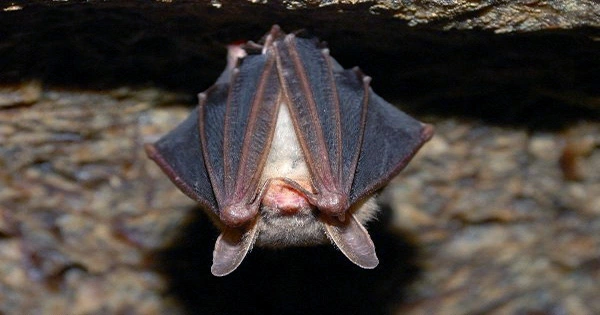Darwin’s hawkmoth, Xanthopan praedicta, is a favorite among entomologists for its unusual proboscis (mouthpart) and among biologists in general since it was predicted by Charles Darwin. Now it’s been discovered that the hawkmoth is even more impressive than previously thought, with the ability to jam the bats’ sonar. As advantageous as this is, it locks the moth in a never-ending survival race. Bats use sonar to navigate at night, and insectivorous bats have honed this ability to locate prey in flight with incredible accuracy. Some moths have discovered methods to interfere with sonar, and Juliette Rubin, a student at the University of Florida, has demonstrated that this extends to the exceptional X. praedicta when it hears bat sonar or is physically handled in the journal Biotropica.
Darwin received a box of orchids from Madagascar in 1862, which included a specimen of Angraecum sesquipedale. A. sesquipedale is known for its “astonishing length,” with nectar buried over a foot (0.3 meters) deep, according to Darwin. “Good Heavens, what insect can suck it?” Darwin said, in language he might not have written today. Darwin prophesied that Madagascar would be home to a moth with a proboscis measuring a foot long (0.3 meter). Darwin’s assertion was backed up by Alfred Wallace, who predicted it would be a relative of Xanthopan morganii, an African moth with the world’s biggest proboscis at the time.
Wallace survived to see the discovery of a Madagascan moth equipped with the necessary fertilization equipment for A. sesquipedale. Xanthopan morganii praedicta was named after the discovery, which was first thought to be a subspecies of Xanthopan morganii. However, several entomologists have recently claimed that it is a separate species known as Xanthopan praedicta. Rubin employs similar terminology, but she’s more interested in the moth’s sonar avoidance abilities. She co-authored a preprint last year that indicated that roughly 20% of moth genera have discovered techniques to jam bat sonar using high-density ultrasound, causing bats to misunderstand their location.
Even though it is folded up when not in use, it takes a huge moth to carry such a proboscis, which makes it an enticing feast for bats. Rubin has now demonstrated that male moths respond to this threat by emitting the world’s longest ultrasonic blast. Rubin believes that this not only disrupts the bats’ sonar, but also deters other predators like lemurs. Females and two closely related species do not respond to ultrasonography. Naturally, bats do not take this lying down (or hanging down) and are continuously improving their sonar to make it less susceptible to jamming, resulting in an evolutionary arms race.
Because moths and bats are natural enemies, it’s only natural that they would compete in this way. The orchids, on the other hand, require the moths to reproduce, which raises the question of why they have made it so difficult for them. The answer is that any insect that can pollinate one flower can pollinate other flowers with similar ease. A generalist is unlikely to go from one flower to another of the same species, and it will likely shed the pollen it accumulates on non-reproductive flowers.
Some plants deal with this by blossoming at odd times of the year, but the calendar only has so many locations. A. sesquipedale, on the other hand, has a blossom that can only be reached by an expert. A moth with a foot-long (0.3 meter) proboscis doesn’t want to waste its powerful organ on just any bloom, so it generally flits from one A. sesquipedale to the next, dispersing pollen where it matters and ensuring the species’ survival. A. sesquipedale, on the other hand, has had to keep prolonging its blossom in order to keep X. praedicta loyal.















